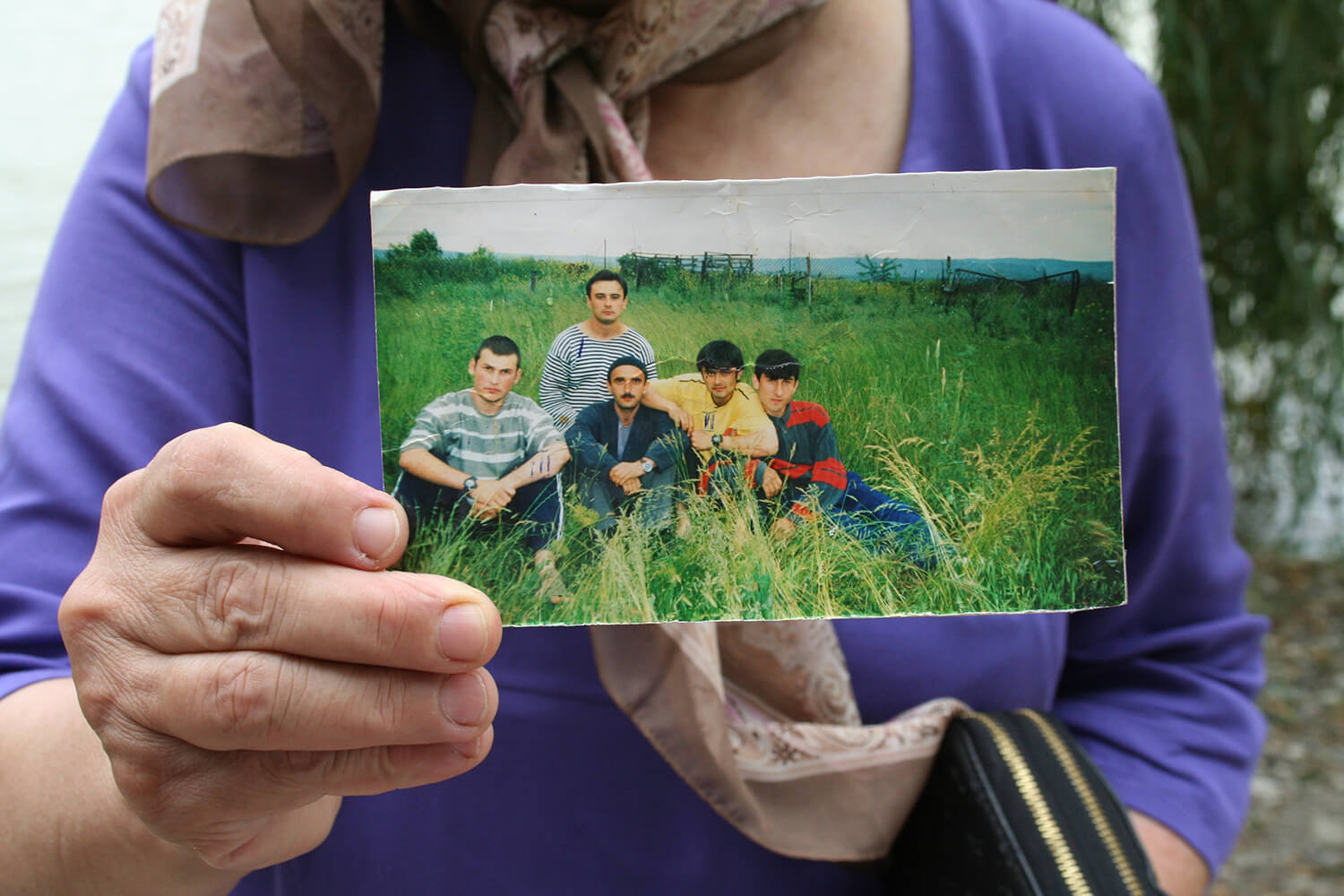Russia
Ethno-political anxieties and enduring cruelties: Where did all these people go in such a small place?
The tragedy of the disappeared in Chechnya, considering the massive scale of the disappearances that went virtually unrecognized but were granted total impunity, gives crucial insights into the authoritarian regimes and ethno-political conflicts in the Caucasus region. The apathy of the Russian Federation’s official stance exposes a rigid persistence against any possible politics of acknowledgment, accountability and redress as well as any tendency towards political liberalization, democratization or the rule of law. This tenacious situation, unfortunately, illustrates par excellence the difficulties of the relatives of the disappeared in their search for truth, justice and memory not only in the North Caucasus region but also in a broader global context. It also proves, once again, that unless properly dealt and reckoned with the atrocities of the past always reoccur and leave tragic traces.
Background
In December 1994, the Russian Federation invaded Grozny, the capital of Chechnya, to establish political and military control over the Chechen Republic of Ichkeria, which had declared its independence. The invasion was met with a rebellion of the Chechen armed groups, which fought from December 1994 to August 1996. The First Chechen War ended with the signing of a peace treaty in May 1997 between the then President Boris Yeltsin and the elected president of Chechnya, Aslan Mashkadov. The treaty, unfortunately, did not last long and the armed conflict recommenced after the apartment bombings in Russia, which according to the declarations of the Russian officials were allegedly planned and executed by “terrorists from the Northern Caucasus”. The second military invasion of Chechnya was defined as an “anti-terrorist” operation, grounded on the Law on the Suppression of Terrorism and the Law on Defense of the Russian Federation. The Second Chechen War lasted almost ten years from August 1999 to April 2009 and affected not only the territory of Chechnya but also the border regions of the North Caucasus.
There are no exact figures concerning the number of casualties in the conflict neither in the first nor the second Chechen war. According to several estimates, there were tens of thousands of civilian casualties in the first Chechen conflict. The situation during the second Chechen conflict was even worse. Different estimates put the death toll at around 25,000. Many of these people were killed during the first months by the aerial bombing of towns and villages. Some of the casualties took place during the fighting, and people were also killed after being rounded up in military operations.
According to the reports of Human Rights Watch, grave human rights violations occurred during the two Chechen conflicts, committed by both the forces of the Russian Federation and the Chechen armed forces. However, the number of grave human rights violations perpetrated by the Russian Federation and the Chechen authorities controlled and encouraged by the Russian Federation seemed to be higher than those committed by the Chechen armed forces. Widespread violence and ill-treatment such as torture, beatings and physical violence, sexual assaults and rape, arbitrary detention and looting of the homes and living spaces resulted in serious human rights violations on a massive scale. Thousands of people forcibly migrated due to the military operations and ongoing armed clashes, and live as internally displaced people outside Chechnya.
Enforced disappearances are one of the most significant grave human rights violations committed on a massive scale during the Chechen conflicts. The enforced disappearance of people was used as a systematic strategy by the Russian Federation for repressing the armed struggle. The detention of thousands of individuals on the pretext of having information on suspected members of armed Chechen groups and their relatives became an ordinary, widespread and systematic practice during the dirty war of Chechnya. Reports of Amnesty International state that, “According to the Ministry of Internal Affairs, by the end of summer 2000, 15000 people in Chechnya had been detained in relation to the conflict.”1 This number increased dramatically, particularly after the escalation of violence during the last half-decade of the conflict; thousands of individuals were again detained for interrogation concerning the armed Chechen groups. Some of them, unfortunately, have never been returned.
Patterns of Crime
There is no accurate data on the number of all the people forcibly disappeared during the Chechen war. A Russian non-governmental organization, Memorial Human Rights Centre, estimated that between 3,000 and 5,000 individuals, mostly men but also a significant number of women and children, had gone missing in the Chechen Republic following what they term as abductions, arbitrary arrests and detentions since 1999. There are other estimates, which are even higher than this number. If we consider the size of Chechnya (15,000 km2) and the total population of the Republic (1,200,000), the horrifying scale of the disappearances becomes even more clear. Almost every house in Chechnya has been affected by the phenomenon of enforced disappearance. As one of the relatives of the disappeared puts it strikingly: one wonders where all these people have gone in such a small place. Moreover, as the conflict continued, especially after 2003, grave human rights violations, including enforced disappearances and abductions, spread to other parts of the North Caucasus, particularly to Ingushetia and Dagestan.
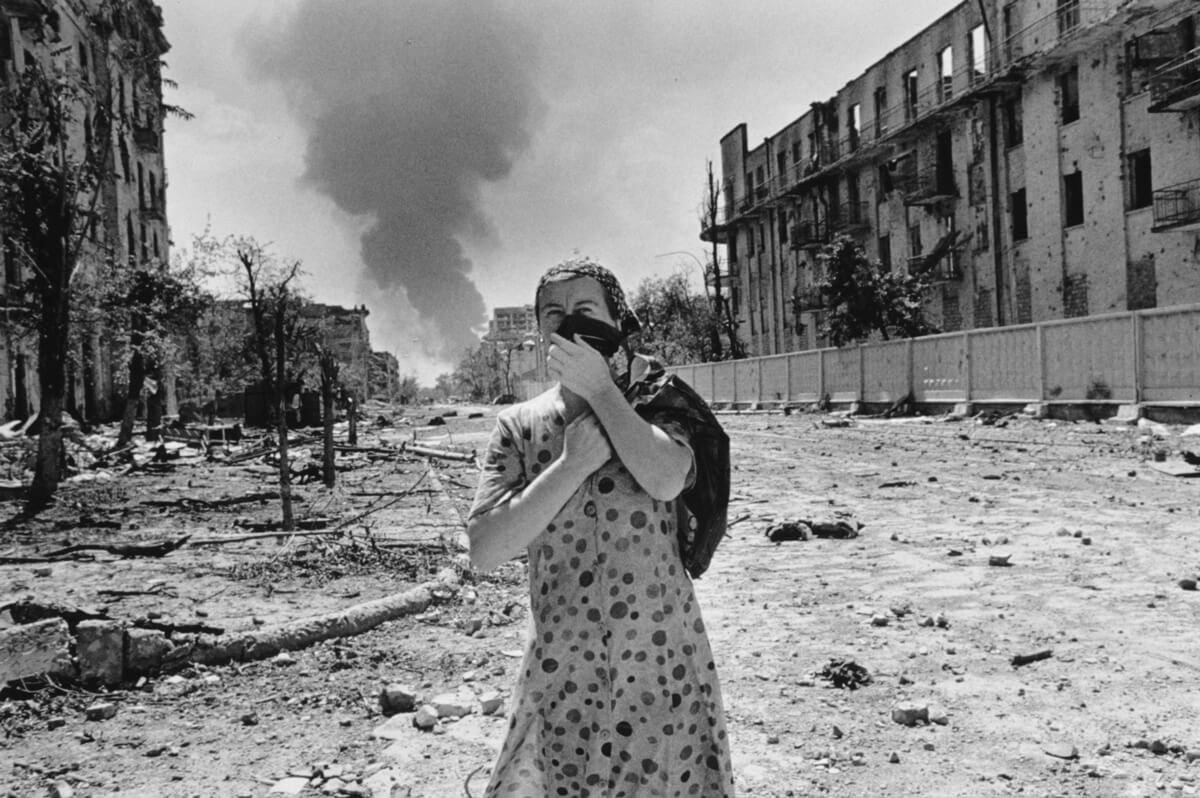
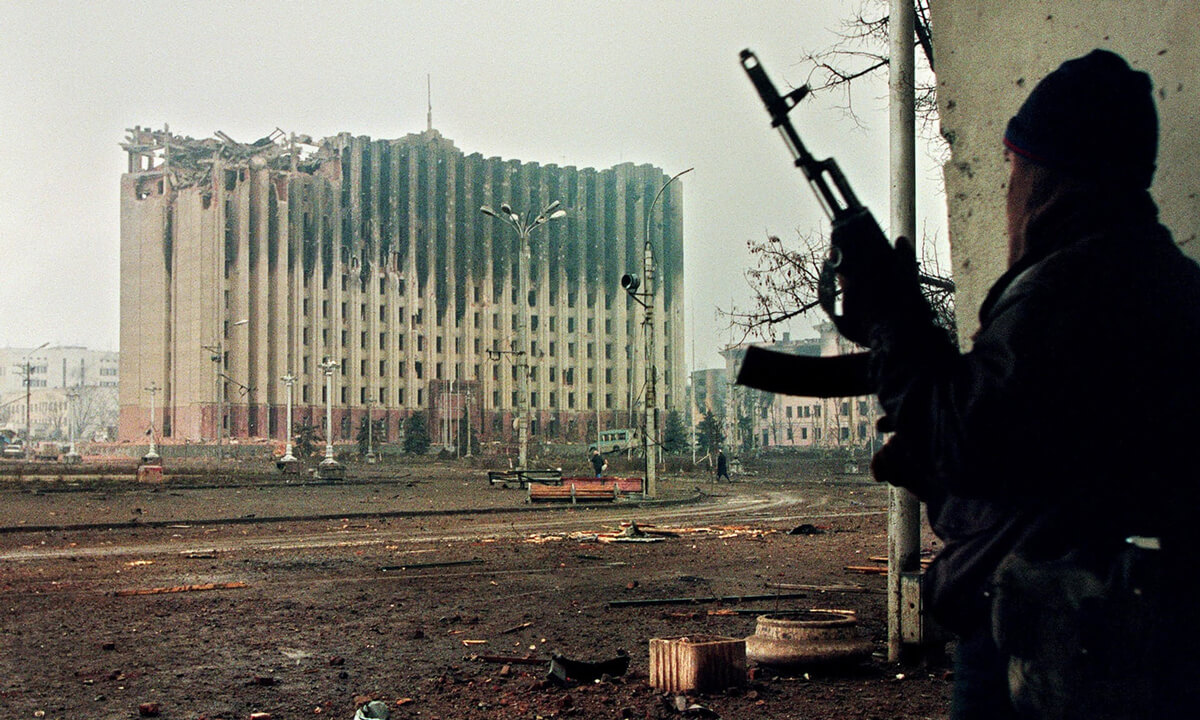
People were detained and then disappeared through a number of common ways; especially the sweep operations were crucial for the implementation of enforced disappearances. Russian soldiers conducted sweep operations in Chechnya, where towns and villages were blockaded while homes and workplaces searched. Allegedly, the aim was to seize weapons and arrest Chechen rebels after finding them where they had been hiding. Therefore, the majority of the disappeared were either detained/abducted after large-scale sweep operations or during targeted sweep and special operations.2 People were also detained from checkpoints or roads, from their homes during nighttime raids, and also from detention centers and police stations.
The Federal Security Service (FSB) and The Ministry of Internal Affairs ran the sweep operations, as well as other “anti-terrorist operations” in Chechnya. The Russian Federation deployed the Ministry of Defense troops, the armed forces of the Ministry of Internal Affairs, riot police (OMON and SOBR), FSB units as well as Ministry of Justice riot troops, also called the temporary police since they worked for limited periods of time. After 2002, however, a phenomenon called the Chechenisation of the conflict occurred; “[it] was a government policy that shifted the conflict from an anti-terrorist operation to the consolidation of local politics in Chechnya by strengthening ‘local organs of power and security structures with civilian and pro- Moscow personnel’.”3 As part of the Chechenisation of the conflict, former rebel armed fighters were incorporated in the military units through an informal amnesty program. The new disappearances during the second conflict were committed via door-to-door detentions in the early hours under the cover of night, obstructing human rights activists’ ability to monitor the processes of detention. Thus, the boundaries between state officials and armed fighters dissolved which in turn prevented the identification of the perpetrators of enforced disappearances as state officials. Bodies of most of the forcibly disappeared were not found and thousands of individuals were buried in unmarked mass graves around Chechnya, where there are 52 registered sites of mass graves. One of the major mass graves was found in Khankala near the main Russian federal military base in Chechnya.4 When the bodies of the disappeared were found, in mass graves or other vacant lots, they were severely damaged bearing signs of torture and ill-treatment.
Legal Situation
The legal situation presents an extremely difficult case, one that the relatives of the disappeared have been trying to overcome with their ceaseless efforts. The attitudes of the Russian authorities have reflected this difficulty perfectly: “[…] The Russian authorities’ responses to the applicant’s efforts were opaque and abdicative, typically consisting of statement that no information was available and that they would refer the inquiry to another agency.” 5 The eternal limbo between the military and civil prosecutors seems to be the first and most important problem in the legal system concerning the forcibly disappeared. This problem has unfortunately escalated due to the constant instructions of the military prosecutors to the relatives of the disappeared telling them to submit their petitions to the civil prosecutors, despite the latter’s incompetence in matters of military apparatus and personnel. According to a report by the Deputy Head of Investigative Department of the Investigative Committee for the Chechen Republic, Mr. Pashayev, other recurrent problems in the investigation of the unresolved crimes allegedly committed by servicemen may be cited as follows: the need to fill in information gaps many years after the events; the difficulties in gaining access to the archives of various security and military units; the absence of a single database of disappeared persons; the weakness of the local forensic laboratories, which had been unable to carry out genetic research; the unclear legal framework for differentiating between the competence of military and civil investigators; the poor results of the military investigators in collecting evidence concerning potential perpetrators among servicemen; and the fact that there were no mechanisms for compensating the relatives in the absence of conclusions from the criminal investigations.6 The reports of Human Rights Watch depicted a very similar situation and emphasized the powerless position of the civil prosecutors’ offices, which are poorly staffed, late in opening investigations, and in some cases, due to lack of diligence, fail to take even the most basic steps such as questioning the available witnesses before simply suspending the investigations. Moreover, the civil prosecutors’ offices, which were powerless before the military actors, were cruel vis- à-vis the relatives of the disappeared. The majority of the relatives of the disappeared interviewed by the Human Rights Watch said that procuracy officials were often unwilling to talk to them or made offensive remarks about their disappeared loved ones and told them to stop coming in for information about the investigation; thus there was widespread apathy among the official staff towards the relatives of the disappeared in the Russian/Chechen case.
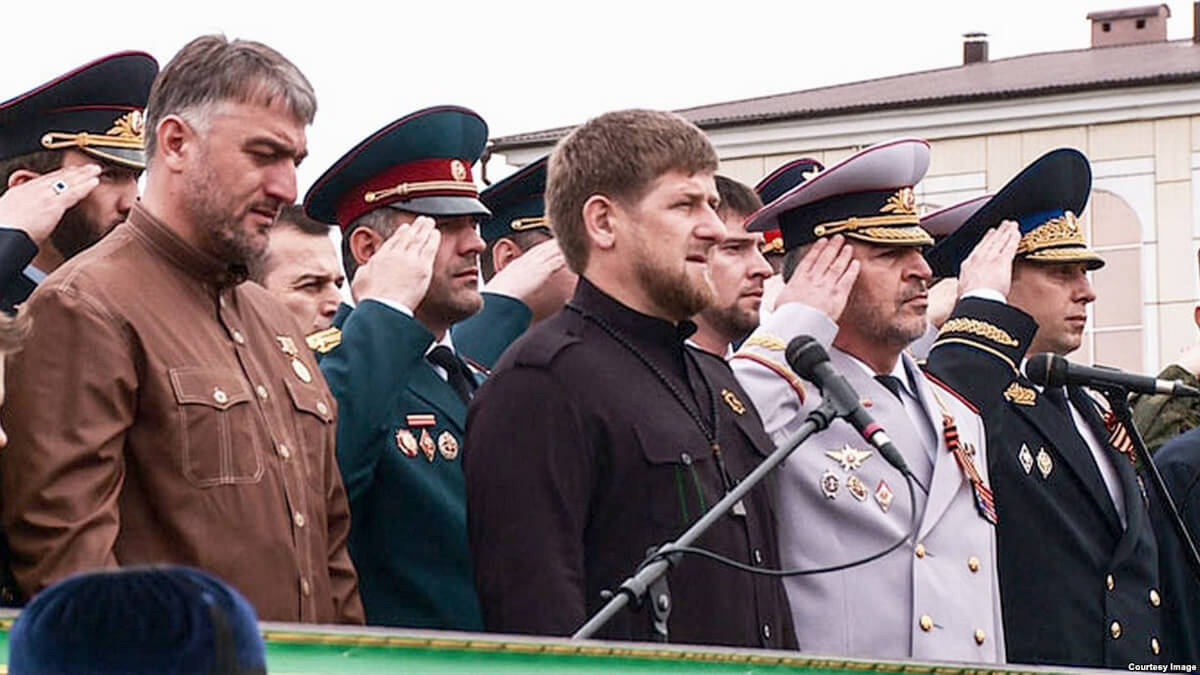
In February 2000, the then President Vladimir Putin appointed Vladimir Kalamanov as his special representative for human rights in Chechnya, which was interpreted by various human rights institutions and bodies as a response to the mounting international pressure on Russia to clean up its human rights record in Chechnya. Kalamanov’s office held a list of individuals who went missing in the course of the conflict, during the interwar years, and during the 1994-1996 Chechnya conflict. As of December 2000, the list contained the names of 462 people, and was forwarded to the Ministry of Internal Affairs, which opened 145 searches in addition to 255 cases that the ministry had already been handling for Chechnya.7 Then, after 2007, with the official appointment of Nurdi Nukhazhiyev as Chechnya’s human rights ombudsman by President Ramzan Kadyrov, new investigations were commenced, which have yet to produce concrete results. In one of his reports, Nukhazhiyev stated that “According to the Chechnya Prosecutor’s Office, since the beginning of the counter-terrorist operation [in October 1999] they had opened 2,027 criminal investigations into the abduction of 2,826 persons. 1,873 of those cases remain adjourned, 74 have been transferred to the military prosecutor’s office”.8 These investigations, unfortunately, remained mostly futile despite Nukhaziyev’s official acknowledgment of the disappearance of 5,000 persons in Chechnya during the counter-terrorist operations. In his statement of 30 August 2011 devoted to the International Day of the Disappeared, where he made this acknowledgment, Nukhaziyev also repeated his recommendation to establish a single inter-agency body to deal with the issue.
The first group of measures concerned the situation of the victims’ families who suffer a sense of acute helplessness and confusion, and the second group of measures concerned the effectiveness of investigations and the problem of impunity.
The situation before the European Court of Human Rights (ECtHR) presents an absolute contradiction with the local legal milieu. Commencing with the first case before the ECtHR, namely the Bazorkina case, the Court’s reasoning was based on a willingness to find state responsibility through the basic circumstantial evidence derived from the surrounding facts, which represented a great step forward after the case law on Turkey. ECtHR stressed the unwillingness of the Russian authorities to cooperate with the Court—lack of providing documents evincing criminal investigation—and also interpreted the context of the conflict in Chechnya as life-threatening at a very early stage.9 Other important leading cases where state responsibility was detected through a similar reasoning although developed over time by different legal subtleties are the Aslakhonova case, the Isayeva case and the Turluyeva case—on a disappearance that occurred in 2009. ECtHR basically specified two groups of measures in order to remedy the systemic failure of the Russian authorities in addressing the issue of enforced disappearances: The first group of measures concerned the situation of the victims’ families who suffer a sense of acute helplessness and confusion, and the second group of measures concerned the effectiveness of investigations and the problem of impunity.10 Most of the cases were brought before the ECtHR by non-governmental organizations such as European Human Rights Advocacy Centre (EHRAC) —in collaboration with Memorial Human Rights Centre—and Stichting Russian Justice Initiative (SRJI).
Memorialization Efforts
Being the relative of a disappeared person is not easy anywhere and definitely not in Chechnya. Relatives of the disappeared, whose loved ones were abducted hors de combat, have been threatened, beaten, taken under custody and in some extreme cases also forcibly disappeared. One of the striking examples is narrated in a report of Amnesty International by a woman with the pseudonym Fatima Giseeva, who had been searching for his husband who was detained by Russian federal forces in 2000 and subsequently disappeared. After calling on law enforcement agencies to investigate and submitting an application to the European Court of Human Rights, one morning in March 2006, several military servicemen dressed in camouflage uniforms and wearing masks seized the son of Fatima Giseeva in the backyard of their house in a suburb of Grozny. “He returned one and a half hours later, bruised and marked, complaining of a terrible headache. He suffered permanent damage to one of his eyes. He said that he had been beaten by the military servicemen who had demanded that his mother withdraw her complaints about the enforced disappearance of her husband.”11
Relatives of the disappeared, mostly women, organize occasional public gatherings and protests in the public places of Grozny such as parks, gardens and squares. Holding up the photographs of their loved ones, they call on the Chechen society, state and civil society organizations to support them in their efforts to end the sufferings of Chechen mothers. Their primary demand is for the remains of their loved ones to be found so that they can have a proper burial. They are still looking for their loved ones in the basements of hospitals, vicinities of military constructions and other vacant lots where they hope to find the remains. While searching for their disappeared, they have “[…] to pay sometimes large sums of money to predatory middlemen who frequent the centers, offering their ‘services’ in locating the loved ones.”12 Given the fact that there are no official means of reparations, compensation programs or holistic approaches for dealing with the disappearance, the relatives are left at the mercy of these predatory middlemen. Moreover, despite Kadyrov’s political promises, Chechnya still has no forensic laboratory of its own. Remains exhumed from mass graves are sent either to Moscow or Rostov-on-Don for identification before they can be returned to Chechnya for burial. Thus, in a context where there has been no official recognition or attempt at reparation, the memorialization efforts are mostly limited to the immediate demands of the relatives for having the remains of their loved ones back for a proper burial ceremony. Even the basics are still tragically lacking for the relatives of the forcibly disappeared in the North Caucasus.
Individual Story
ALİ AND UMAR MUSAEV
“If they’re not yours, I’ll give you back your money”
On August 8, 2000, a Russian armored personnel carrier (APC) was attacked and blown up in the vicinity of Gekhi and the military responded with a “sweeping” operation in the village. During this operation, an armed man who was being pursued by soldiers entered a house where two brothers, Ali Musaev [born in 1972] and Umar Musaev [born in 1977] were living with their parents, and hid in one of the rooms. According to the Government, the man was A., a member of an illegal armed group. The servicemen strafed the house, using machine-guns. Two sisters, one nephew and mother and father of Ali and Umar Musaev were inside the house at the time along with the Musaev brothers. A two-year-old nephew of the Musaev brothers was in a car parked in the courtyard.
A. was killed when the military threw nine grenades into the house. The servicemen then wrapped the corpse in a blanket and put it into Ali Musaev’s car, a white Zhiguli. They then searched the house. Umar Musaev, who had been feeling ill that day and was lying in bed, was blindfolded and ordered to step out of the house and lie down. Major S., an officer in command, seized the identity papers, car documents and car key belonging to Ali Musaev, who was then forced into the car. Umar Musaev was put into an APC, which had no visible vehicle number. They were both taken away.
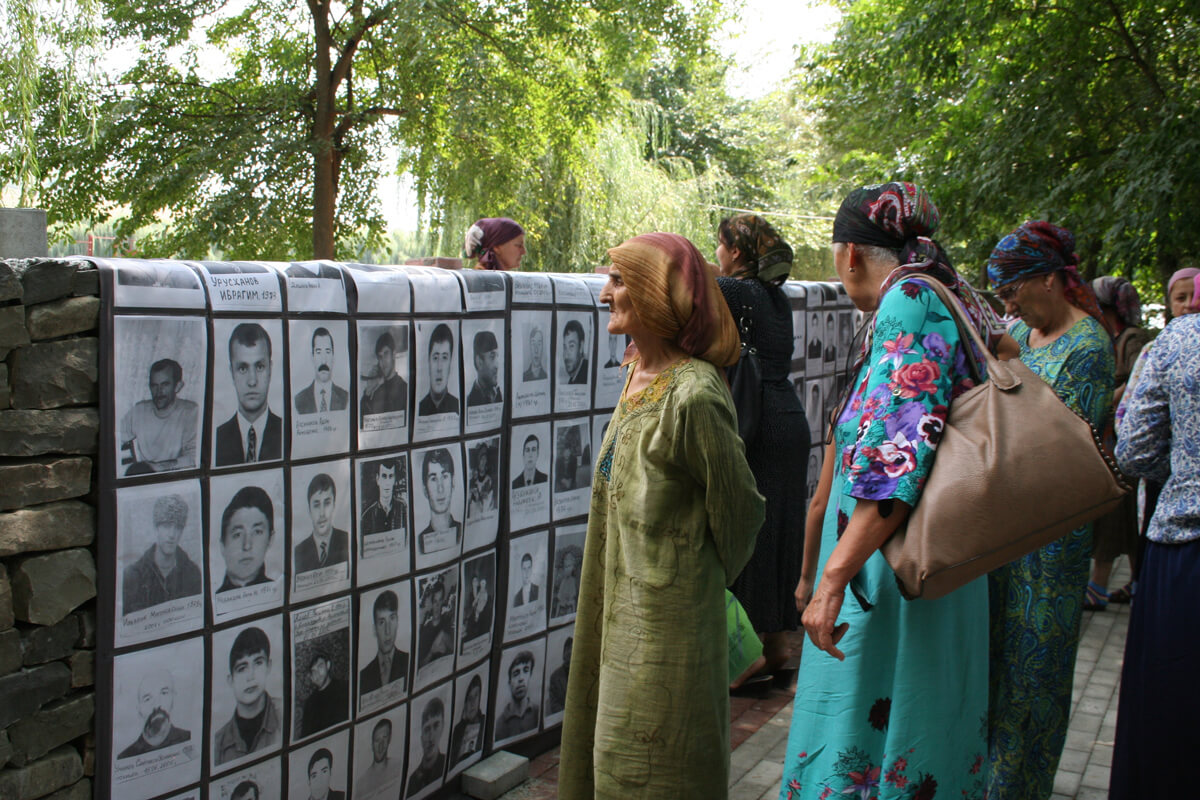
Mother of Ali and Umar Musaev, Aminat Musaeva, applied to several official authorities, asking for the whereabouts of her children. In the meantime, the neighbors of the Musaev family told them that on August 11, 2000, the Russian TV channel NTV had shown Ali Musaev’s body as that of a rebel fighter killed during the “sweeping” operation in Gekhi on August 8, 2000. Then, Aminat Musaeva reached the civilian procuracy and informed them about the broadcast which had specified the names of the army officials involved in the shooting. The investigator of the civilian procuracy told her that he did not have the authority to question the high-ranking military officers who were seen on national television in the presence of Ali Musaev’s dead body. Aminat Musaeva also managed to enter the military headquarters at Khankala. She told the Human Rights Watch that the procuracy official reacted with immense surprise saying: “Woman! How did you get in here?”. Musaeva explained the case of her sons and the procuracy official watched the videocassette that shows her dead son in the hands of high-ranking officers. However, when she tried to come back to the base, she could not make it through the checkpoints.
Later on, a soldier offered to sell information to Aminat and Alamat Musaev (father) about the location of their sons’ grave, asking for 5,000 rubles for each son (about US$178). They negotiated the price down to 2,000 rubles for each son (about US$75), and the soldier gave them a small, hand-drawn map with a cross near the apparent burial site, promising, “If they’re not yours, I’ll give you back your money.” The Human Rights Watch Report described what happened next [on September 2000] as follows:
“After warning the local administration, the military commander, and the procuracy, the Musaevs went to the site of the grave. The local head of administration came as well and brought a doctor and a forensic expert. They then uncovered two holes—one containing three bodies, another containing one. Alamat Musaev told Human Rights Watch about the condition of the bodies: ‘I saw [the bodies] only later, not during the exhumation but when they were brought to the cemetery. I saw my elder son, Ali, and fainted when I did. The others were impossible to recognize as they had been eaten by dogs; only bones remained… We recognized [Umar] only by his teeth.’”13
The case was brought before the European Court of Human Rights by the family of Ali and Umar Musaev in 2001. The Court, unanimously, held that there has been a violation of Articles 2, 3, 5 and 13 of the European Convention on Human Rights and found Russia responsible for their disappearances and murders.
Appendix – Crimean and Ukrainian Context
Enforced disappearances have unfortunately returned to the agenda over the last few years. Crimea was annexed by the Russian Federation in 2014, which was followed by the military intervention of Russia with the support of the “Crimean self-defense” paramilitary groups. The President of the Russian Federation, Vladimir Putin, stated that he took the decision to “start working on the return of Crimea to the Russian Federation” on February 23, 2014. After the dissolution of the Parliament of Crimea, the Supreme Council of the Autonomous Republic of Crimea and Sevastopol City Council adopted a joint Declaration of Independence stating that Crimea and Sevastopol will unite to form a sovereign state (“Republic of Crimea”) independent from Ukraine and seek integration into the Russian Federation if the Crimean residents vote to join the Russian Federation at the upcoming referendum. After the referendum, the Russian Federation and the “Republic of Crimea” signed a “treaty of accession” on March 18, 2014.
Against this backdrop, began the imposition of Russian Federation citizenship on the residents of Crimea and a massive wave of violence against pro-Ukrainian, Maidan, and Crimean Tatar activists. Meanwhile, the Mejlis, which is as a self-governing institution of the Crimean Tatar population, was closed down in a wave of oppression against its supporters. Enforced disappearances, along with other forms of oppression, torture and ill-treatment, began to appear on the political scene. According to the report of the Office of the United Nations High Commissioner for Human Rights, there are 10 cases of persons, all men, who disappeared and are still missing; six of them are Crimean Tatars, three ethnic Ukrainians and one Russian- Tatar. Seven of them went missing in 2014, two in 2015 and one in 2016. This tragic reoccurrence of the phenomenon of enforced disappearances, once again, proves the crucial necessity of dealing with state crimes, atrocities and impunity as it demonstrates par excellence the endless repetition if not dealt properly.

